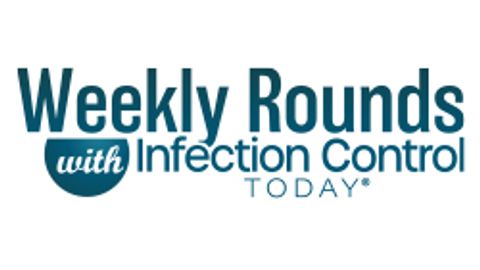Weekly Rounds: Operating Room Efficiency, Reducing CLABSI and CAUTI, and Professional Development of IPs
Take 5 minutes to catch up on Infection Control Today®’s highlights for the week ending April 16, 2023.

Here are 5 highlights from Infection Control Today®'s (ICT®’s) wide-ranging coverage of the infection prevention and control world. Everything from interviews with known opinion leaders to the news that infection preventionists and other health care professionals can use on their jobs.
Improving Operating Room Efficiency
In an education session at the 2023 Association of the PeriOperative Nurses (AORN), Sheri Voss, MS, RN, CNOR (Emeritus), taught attendees about factors affecting operational performance in the operating room and what can be done about them.
Figuring Financial Impact of Surgical Site Infections With Cost Calculations
Surgical site infections (SSIs) are not getting documented as often as they occur, and the financial toll could be staggering. Two experts presented what can be done to reduce SSIs on this topic. Then they spoke with Infection Control Today at the Association for PeriOperative Nurses (AORN) held in San Antonio, Texas, on April 1-4, 2023.
Shortages Shown by Antibacterial Supply Patterns, Access Issues
Prescribers are presented with the optimal therapy challenges and achieving antibacterial stewardship.
Reducing CLABSI and CAUTI: What Is an Infection Preventionist’s Role?
Central line-associated bloodstream infections (CLABSIs) or catheter-associated urinary tract infections (CAUTIs) have been increasing since the beginning of the COVID-19 pandemic. What is the IP's role in preventing them and the mortalities that sometimes accompany them?
Encouraging Professional Development of IPs and Epidemiologists
How does someone become an infection preventionist or an epidemiologist? And how does the person continue to grow in their profession? Isis Lamphier, MPH, CIC, explains.
A Controversial Reboot: New Vaccine Panel Faces Scrutiny, Support, and Sharp Divides
June 26th 2025As the newly appointed Advisory Committee on Immunization Practices (ACIP) met for the first time under sweeping changes by HHS Secretary Robert F. Kennedy Jr, the national spotlight turned to the panel’s legitimacy, vaccine guidance, and whether science or ideology would steer public health policy in a polarized era.
Getting Down and Dirty With PPE: Presentations at HSPA by Jill Holdsworth and Katie Belski
June 26th 2025In the heart of the hospital, decontamination technicians tackle one of health care’s dirtiest—and most vital—jobs. At HSPA 2025, 6 packed workshops led by experts Jill Holdsworth and Katie Belski spotlighted the crucial, often-overlooked art of PPE removal. The message was clear: proper doffing saves lives, starting with your own.

